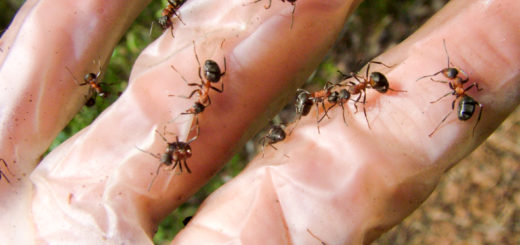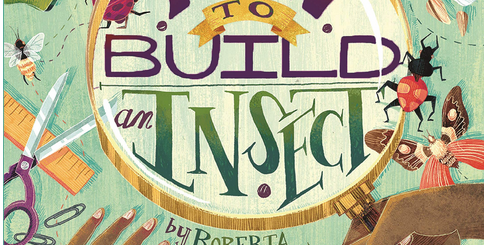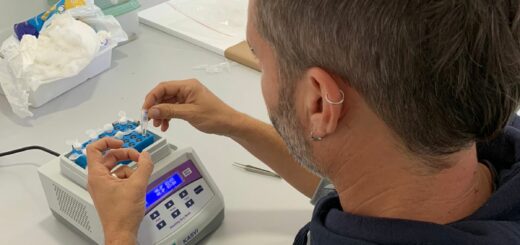Accessing the file drawers of experienced researchers: joint interviews with Bert Hölldobler and Robert Page
Every day, thousands of papers in various research fields are published. Some of them receive lots of attention, while others remain unnoticed. Simultaneously, thousands of studies are not even submitted to journals because the results are insignificant or the authors think the work does not add sufficient new knowledge to their research field. In these joint interviews by Insectes Sociaux and Myrmecological News, Bert Hölldobler and Robert E. Page Jr. share some interesting insight about their own research and why some studies did not result in papers. Here, you will read the interview with Bert Hölldobler. Check also out the corresponding interview with Robert Page on Insectes Sociaux!
An Interview compiled by Patrick Krapf

MNB: Dr. Hölldobler, as you look back on (and are still proceeding with) an amazing career in social insect research, roughly how many papers have you published so far?
BH: About 300 papers and six books.
MNB: Which of your papers received the most widespread attention? Did you expect this?
BH: I really do not know and I never paid attention to this. It has been said that our paper B. Hölldobler & E.O. Wilson (1977): The number of queens: an important trait in ant evolution, Naturwissenschaften 64: 8-15 is among the most cited papers. In addition, my work on territorial strategies were once listed among the most cited papers. However, this was never an issue for me.
MNB: Have you published any papers that you think received insufficient attention from the scientific community? If so, can you give us an example?
BH: To be honest, I did not pay attention to that. I really do not know.
MNB: What do you think is the main reason well-designed studies go unnoticed by the scientific community?
BH: I do not know. The reasons may be various, I guess.
MNB: Have you completed studies of which you have not published the results even though you consider them relevant? To how many projects or datasets does this apply over your career, approximately?
BH: I recently published three papers most data of which were collected 45 to 50 years ago. The work was almost completed when I immigrated to the USA in 1972/73 where I accepted a professorship at Harvard University. Very new challenges were waiting for me, and I had to develop a new research program. The studies I am talking about were the experimental behavioral analyses of several mymecophiles I did during my tenure at the University of Frankfurt. Several papers were already published, but others could not be finished. When I returned to Germany almost 18 years later, I had to focus on building up a new research group and help create the new Biozentrum at the University of Würzburg, and I got involved, whether I liked it or not, in science political assignments. No time to look at these old data. Finally, after my retirement and a new research position at Arizona State University, I decided to see whether this old material contains enough interesting information to be published. I reanalyzed all the histological sections, my young collaborators organized and statistically analyzed the quantitative behavioral data. Three papers were published during the past two years, and an additional one on queen glands and sexual selection in legionary ants, the work of which dates back decades.
MNB: Wow, great! Probably, you still do have unpublished datasets. If so, do they have anything in common? Why did you not publish them? Was it ever due to a lack of statistical significance?
BH: Yes, I have also some unpublished work, where I remained unsatisfied with the data, and I hoped I can do better, or I did not give top priority to the project. On some, I am still working.
MNB: Does the field of social insect research generally suffer from gaps due to data not being published?
BH: This I cannot judge, because I do not know which data have not been published. I realized in several cases of work I hesitated to publish that similar results were later published by younger colleagues.
MNB: What do you think is the general trend over time concerning the amount of unpublished data? Stable, decreasing, increasing?
BH: It is impossible for me to say, because I do not know of unpublished work except my own or some of close friends, for example Ulrich Maschwitz, who recently passed away and left many unpublished data and excellent unpublished observations from his field work in Malaysia.
MNB: Would you be willing to share any or all of these unpublished data so that others could learn from them or profit in any other way? If so, what might be a good platform for this? Do you think that, for example, a database could be set up for such data?
BH: In principle
Featured image made by Eucalyp from www.flaticon.com is licensed by CC 3.0 BY






Something new that I discovered is realizing you could publish the work that was done more than a decade back and still holds.
This is why love reading the articles here, you don’t get the opportunity to be with expert researchers but their work, their speech, their interviews are always there to fall back on and help you to guide.
Thank you Myrmecological News for your novel effort. This will always be a place to take pride of.